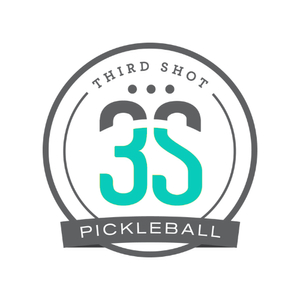If you want to play good pickleball it’s important that you know what is true. For example, it is useful to know that the distance your ball travels is related to the height, speed and spin you put on it. But it is also important to know about what’s not true — and pickleball sure has its fair share of myths. Let’s explore a few of them:
Myth # 1 - Forehand Takes the Middle. If you have played much pickleball, you know it is important for teams to have a plan for when the ball goes down the centre of the court. And while teams will often establish that the player with the forehand takes these middle balls, this should not be the unspoken default. Why?
First, it’s not that uncommon for someone to have a better backhand than forehand. Especially as we see players use two hands on their non-dominant side, backhands are becoming very good counter-attacking and even offensive shots.
Second, when it comes to finesse shots like drops and dinks, many players prefer to hit these balls with their backhand. For example, It is not uncommon that a player has an inconsistent forehand drop but is super steady on the backhand.
Strong teams know that sometimes it makes sense for the player with a backhand to take middle balls.
Third, on a team with players of two different skill levels, it is conceivable that the stronger player’s backhand is superior to the weaker player’s forehand. As an extreme example, Anna-Leigh Waters has an amazing two-handed backhand. If you are lucky enough to play with her one day, we would strongly recommend you let A-L take any backhand she can. But the same principle applies with your play with Anna-Leigh or not: you should assess the relative strength of each of your forehands and backhands to figure out who should take the middle ball.
If you are lucky enough to play with Anna-Leigh Waters, let her hit all the backhands she can.
Myth # 2 -The Followthrough Influences Where the Ball Goes. Many people think that following through towards your target will make the ball go there. This is simply not true. By the time the followthrough takes place, the ball has already left the paddle —it’s going to go wherever it’s going to go! This doesn’t mean that the follow through doesn’t matter, but it does mean that the followthrough doesn’t influence, the height, speed, spin distance or direction of a shot.
By the time who followthrough takes place, the ball is already on the way to its destination.
Myth #3 - You Should Use Your Forehand Whenever Possible. This myth touches on the one identified in point number one. If a player has a stronger backhanded than forehand, then they should use that strength when possible. Additionally, while you may choose to run around your backhand to hit a forehand, the juice may not be worth the squeeze if it’s putting you out of position. Finally, some shots are just easier to hit off the backhand. Have you ever noticed the pros will often choose to return serve with their backhand? This is typically because they find it easier to create backspin and sidespin when sweeping across their body on the backhand. This doesn’t mean they can’t do it with the forehand - it just may not be as natural a swing path.
One of the reasons pickleball is so fun is because it creates opportunities to make decisions: hit it left vs hit it right; speed things up or slow them down; play for a winner or just keep the ball in play. But in order to make good decisions, you need to have good information. And that’s where a little bit of myth-busting can go a long way.




